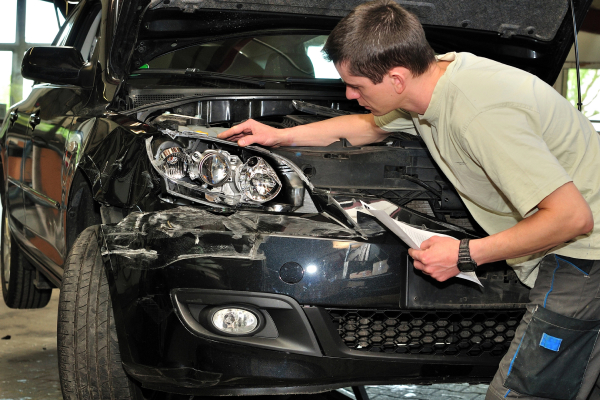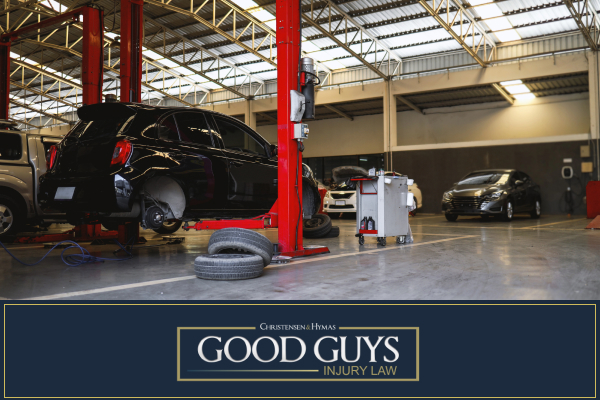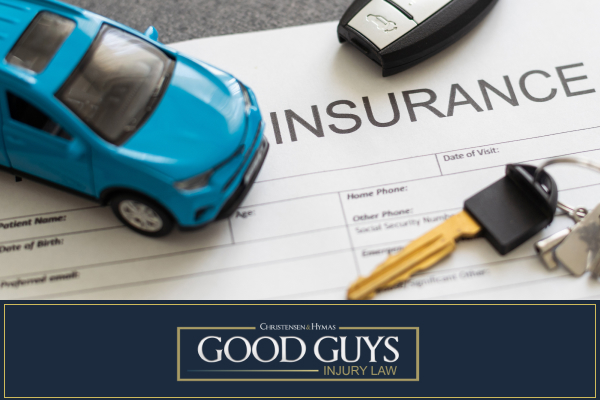
At Good Guys Injury Law, our loan options for repairing your car after an accident can help you get back on the road faster. We know that dealing with auto repair costs after a crash can strain your finances. This is even harder when you’re also dealing with injuries. As personal injury lawyers in Utah, we’re here to guide you through this tough time.
Table of Contents
Understanding Your Financing Options for Car Repairs
Finding the right way to pay for car repairs after an accident can feel overwhelming. You might be confused about which path to take between insurance claims, out-of-pocket expenses, and various loan types. The best financing option depends on your situation, including your credit history and how quickly you need the repairs.
Your car is often vital to your daily life, so fixing it quickly is a priority. From personal loans to repair shop financing, there are several ways to cover these surprise expenses without emptying your savings.
1. Auto Repair Loans

Auto repair loans are special financing products designed to help car owners pay for needed repairs. These loans give you quick funds to fix your vehicle while letting you spread the cost over time through monthly payments. Unlike general personal loans, auto repair loans are made just for vehicle repairs.
These loans typically feature stable interest rates and predetermined repayment schedules, simplifying your monthly budget planning. Some lenders offer special auto repair loans with better rates for those with a good credit history.
Many auto repair loans don’t need collateral. This makes them unsecured debts like personal loans. This means you won’t risk losing your car if you struggle to repay, unlike some other financing options.
How Auto Repair Loans Work
Getting an auto repair loan is simple. First, you apply with a lender, such as a bank, credit union, or online lender. The lender will check your credit through a hard or soft credit pull to determine whether you qualify and what interest rates you can get.
After credit approval, the funds are usually sent to your bank account within one business day. This lets you pay the repair shop quickly. Some lenders might offer same-day funding for emergencies, though this might cost more in fees or interest.
Pros and Cons of Auto Repair Loans
Benefits:
- Quick access to money when you need it most
- More affordable interest rates compared to credit cards or payday loans
- Fixed repayment terms help you plan your budget
- Many lenders don’t charge origination fees
Drawbacks:
- Still charge interest, increasing your repair expenses
- Higher interest rates if your credit history isn’t strong
- Some loans have penalties if you try to repay early
2. Personal Loans for Car Repairs
A personal loan offers a flexible way to finance your car repair after an accident. Unlike special auto repair loans, personal loans can be used for any purpose. This gives you more freedom in how you spend the money. You can cover both vehicle repairs and other accident-related expenses.
Personal loans often provide larger loan amounts than specific auto repair loans. This helps if your vehicle has major damage. They also come with fixed interest rates and regular monthly payments, making them easier to fit into your budget.
These loans are available from many financial institutions, including banks, credit unions, and online lenders. You can compare loan offers and find the best terms.
Benefits of Using a Personal Loan for Auto Repairs
Personal loans often have good interest rates, especially for borrowers with good credit history. The fixed payment schedule helps you track your progress toward becoming debt-free, unlike credit cards.
Another plus is the quick approval process. Many lenders offer fast decisions and next-business-day funding. This gets you the money for repairs without long waits. Certain online lenders allow you to review your rates using only a soft credit inquiry, enabling you to look for options without impacting your credit score.
3. Auto Repair Financing Through Repair Shops

Many auto repair shops now offer their financing plans to help customers cover repair costs. You can access this choice directly at the shop, sparing you the hassle of seeking an external lender. Some shops work with specific lenders to provide financing options, while others have their programs.
This convenience has trade-offs. The interest rates might be higher than those offered by a bank. Some repair shops might also charge more for their services when you use their financing, making repairs more expensive.
Still, repair shop financing can be a good option for those who need quick repairs and want a simple process.
How Repair Shop Financing Works
When you bring your car to the repair shop, they’ll give you an estimate for the needed work. If you can’t pay the full amount right away, ask about their financing options. The shop will usually have you fill out an application on the spot.
The credit approval process is often quick, sometimes taking only minutes. If approved, you can authorize the repairs right away, and the shop will start work. You’ll then make payments to the financing company or the shop based on your agreement.
Advantages of Choosing Repair Shop Financing
The biggest advantage is convenience. You can arrange your repairs and financing in one place, making the process easier when you’re already stressed from an accident. The application is usually simple, with minimal paperwork.
Many repair shop financing programs offer special deals, such as zero-interest periods if you pay in full within a certain time. This can make them affordable if you can repay quickly. For those with less-than-perfect credit, repair shop financing might be easier to get than traditional loans.
4. Credit Cards as a Financing Option for Car Repairs
Using a credit card to pay for car repairs gives you instant access to funds without going through a loan application. If you already have a card with available credit, you can simply pay the repair shop directly and avoid waiting for loan approvals.
Some credit cards offer cashback or rewards on purchases, including auto repairs. This can help offset some of your costs. New credit card accounts frequently feature introductory deals, such as a temporary 0% interest rate. If paid off during this period, they can be cheaper than loans.
One drawback is that credit cards typically charge higher interest rates compared to loans if you maintain a balance past the promotional period. This makes them expensive in the long run.
Using Credit Cards for Auto Repairs
If you decide to use a credit card, try to pick one with the lowest interest rate or the best promotional terms. Some cards offer special benefits for auto-related expenses, like extended warranties on repairs.
To avoid high-interest charges, plan to pay off the balance as quickly as possible. Consider whether you can realistically pay the entire amount before any promotional period ends, as interest rates will jump afterward.
When to Consider Credit Card Financing
Credit cards work best for smaller repair amounts that you can pay off quickly. They’re also good for emergencies when you need immediate repairs and can’t wait for loan approval.
If you’ve been offered a new credit card with a 0% interest promotion, it can be smart to use it for planned repairs. Just be sure to calculate the monthly payments needed to clear the balance before the promotional period ends.
5. Insurance Coverage and Car Repairs

After an accident, your auto insurance might cover some or all of your repair costs. This depends on your coverage type and the accident details. Understanding what your policy covers helps you know how much you’ll need to finance.
Collision coverage usually covers the cost of fixing your car after an accident, regardless of who caused it. Comprehensive coverage handles non-collision incidents like theft or weather damage. Both usually have a deductible, which is what you pay before insurance helps.
If another driver is at fault for the accident, their liability insurance should pay for your repairs. However, this process can take time. You might need temporary financing until the insurance claim is settled.
How Insurance Can Help Cover Repair Costs
When you’re in an accident, file a claim with your insurance company right away. They’ll send someone to assess the damage and decide what repair costs they’ll cover. After approval, the insurance company may either pay the repair shop directly or issue you a check, less your deductible.
Some insurance companies have preferred repair shops in their network. Using these shops can make the process smoother, as they work directly with your insurer.
What to Do If Insurance Doesn’t Cover All Repairs
Insurance might not cover all your repair expenses for several reasons. Your coverage might have limits, the damage might exceed your policy limits, or you might need to pay a deductible. In these cases, you’ll need to find ways to cover the gap.
Start by talking with the repair shop. If you explain your situation, they might offer payment plans. You can also get estimates from different shops to find cheaper options. If these approaches don’t work, consider the financing options we’ve discussed.
6. Title Loans for Car Repairs
A car title loan uses your vehicle as collateral to secure funds for repairs. This option allows you to borrow against your car’s value while still driving it. The loan amount is based on your car’s value, typically 25% to 50% of its value.
Title loans appeal to people with poor credit because the car serves as collateral. The application is simple, and funding is often available within a day, making this an option for urgent repairs.
The major risk is losing your car if you can’t repay. This is especially problematic when the vehicle you’re using as collateral needs repairs.
How Title Loans Work for Auto Repairs
To get a title loan, you need to own your car outright with no loans against it. You’ll give the lender your car title, proof of insurance, ID, and sometimes proof of income. The lender checks your car and offers a loan amount based on its value.
If you accept, you’ll sign a loan agreement and give the lender your car title. You keep and use your car during the loan term, but the lender puts a lien on it. Once you repay the loan with interest and fees, the lien is removed, and your title is returned.
Pros and Cons of Title Loans
Benefits:
- Quick cash without credit checks
- Simple application process
- Fast funding, often within one business day
- You can still use your car while repaying
Drawbacks:
- High interest rates, often 25% or more per month
- Short loan terms, typically 30 days
- Risk of losing your vehicle if you can’t pay
7. Negotiating Payment Plans with Repair Shops

Many auto repair shops understand that major repairs can strain your budget. They’re often willing to work with you on payment plans. Talking directly with the repair shop can save you from taking on debt or paying interest. This makes it one of the most cost-effective options if available.
Before agreeing to a payment plan, make sure you understand all the terms. Some shops might charge a fee for this service or require a down payment before starting work. Get everything in writing to avoid misunderstandings later.
This approach works best with local shops where you have a relationship. Chain repair shops might be less flexible with custom payment arrangements.
How to Request a Payment Plan
Start by getting a detailed estimate of all needed repairs. This allows you to clearly see the breakdown of expenses and the overall amount you’ll need to cover. Ask to speak with the shop manager or owner, as they usually have more power to approve payment plans than the front desk staff.
Be honest about your financial situation and why you need a payment plan. Suggest specific terms you can actually meet, such as a down payment and weekly or monthly installments. Be prepared to provide evidence of your income to demonstrate your ability to repay the loan.
Benefits of Payment Plans for Car Repairs
The biggest advantage of shop payment plans is that they avoid the interest and fees associated with loans or credit cards, lowering overall repair expenses. You also skip the credit check required by most lenders, making this option open to you regardless of your credit history.
Payment plans allow you to get necessary repairs immediately rather than waiting until you’ve saved enough money. This is especially important for safety-related repairs that shouldn’t be delayed.
Comparing Loan Options for Car Repairs
When choosing between different financing options, take time to compare their features and costs. Look beyond the monthly payment to understand the total cost over the life of the loan. Even minor variations in interest rates can accumulate into substantial sums over time.
Consider the loan amount you need compared to what’s offered. Some options have minimum or maximum limits that might not match your repair costs. Also, consider when you’ll get the money. If you need immediate repairs, rule out options with long approval processes.
Your credit score will greatly impact which options are available to you and at what cost. If you have good credit, traditional loans or credit cards might offer the best terms. Those with poor credit might need to look at secured loans or alternative lenders.
Key Factors to Consider When Choosing a Loan
- Interest rates directly affect your total repayment amount
- Loan terms determine how long you’ll be making payments
- Fees such as origination fees or prepayment penalties can increase costs
- Approval speed matters when you need repairs quickly
- Credit requirements vary between lenders and loan types
How to Compare Interest Rates and Terms
Use online loan calculators to see how different interest rates and terms affect your payments and total cost. This approach allows you to assess the lasting effects of each choice. Additionally, obtaining quotes from several lenders for the same loan amount enables you to compare options side by side.
Read the fine print on all loan offers, looking for hidden fees that might make the loan more expensive than it seems. Be careful with variable interest rates, as they may rise over time, leading to unpredictable payment amounts.
Consider pre-qualifying with several lenders to see what rates you’re offered without affecting your credit score. Many lenders now offer this through a soft credit pull, letting you compare options without commitment.
Tips for Choosing the Right Financing Option
Your choice of financing should match both your immediate needs and long-term financial goals. Before taking on debt for car repairs, consider these important factors:
- Match financing to your timeline – If you need repairs right away, focus on options with fast approval and funding. For planned repairs, you might have time to apply for options with lower interest rates.
- Be realistic about repayment. When choosing a loan amount and term, consider your ability to repay carefully. While it’s tempting to borrow extra for “just in case” expenses, this increases your debt burden unnecessarily.
- Borrow only what you need – Request a detailed repair estimate and only borrow that specific amount rather than a round number that exceeds your actual costs.
- Check existing coverage first – Don’t forget to check if your car is still under warranty or if you have mechanical breakdown insurance, as these might cover some repair costs.
- Use insurance when possible – If the repairs are due to an accident, your auto insurance or the other driver’s insurance might pay for some or all of the work before you need to consider financing.
Contact Good Guys Injury Law for Help After an Accident

If you’ve been in a car accident in Utah, Good Guys Injury Law can help you navigate the complicated aftermath. Our team specializes in personal injury cases and understands the financial strain that accidents can cause, from medical bills to vehicle repairs.
We fight for fair compensation that covers all your accident-related expenses, including the full cost of your car repairs. Our experience with insurance companies can help you get the maximum coverage you’re entitled to, reducing your out-of-pocket repair expenses. Call us today for a free consultation about your case, and let us help you get back on the road without financial worry.
